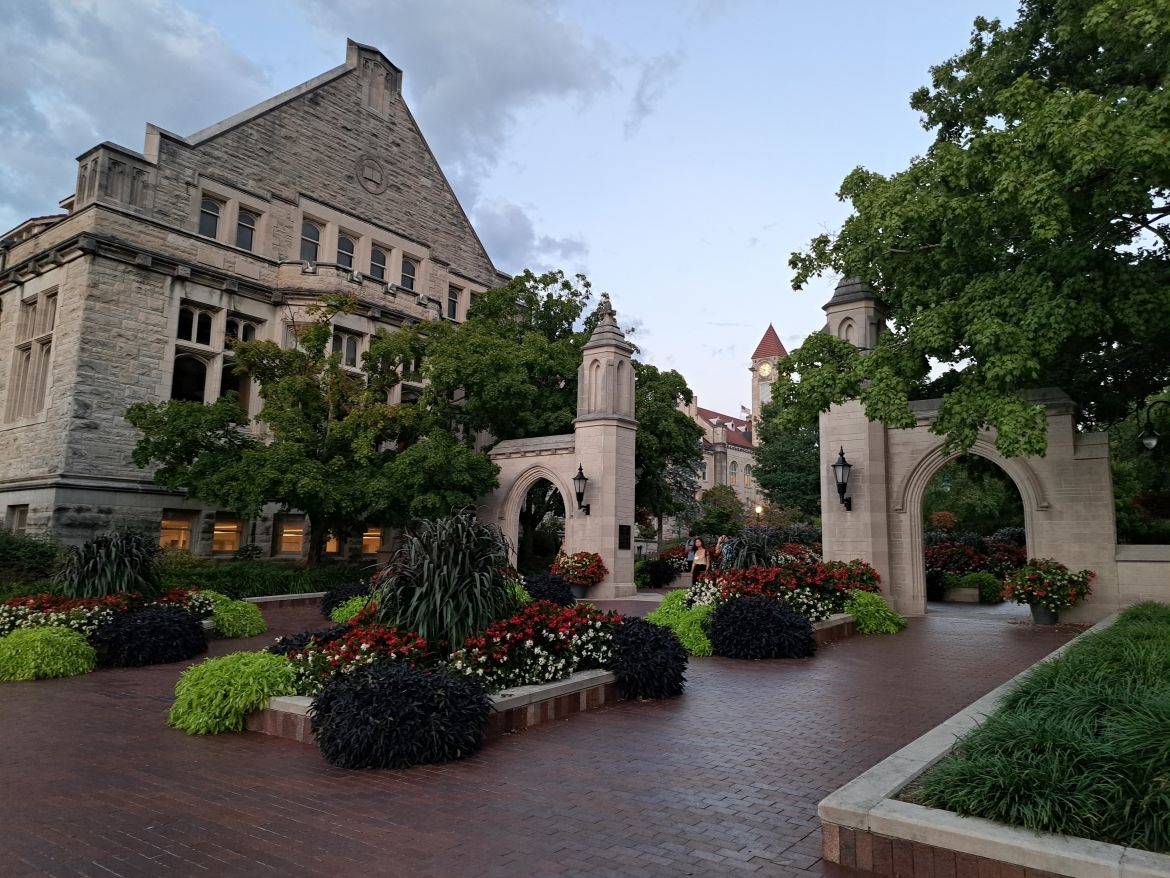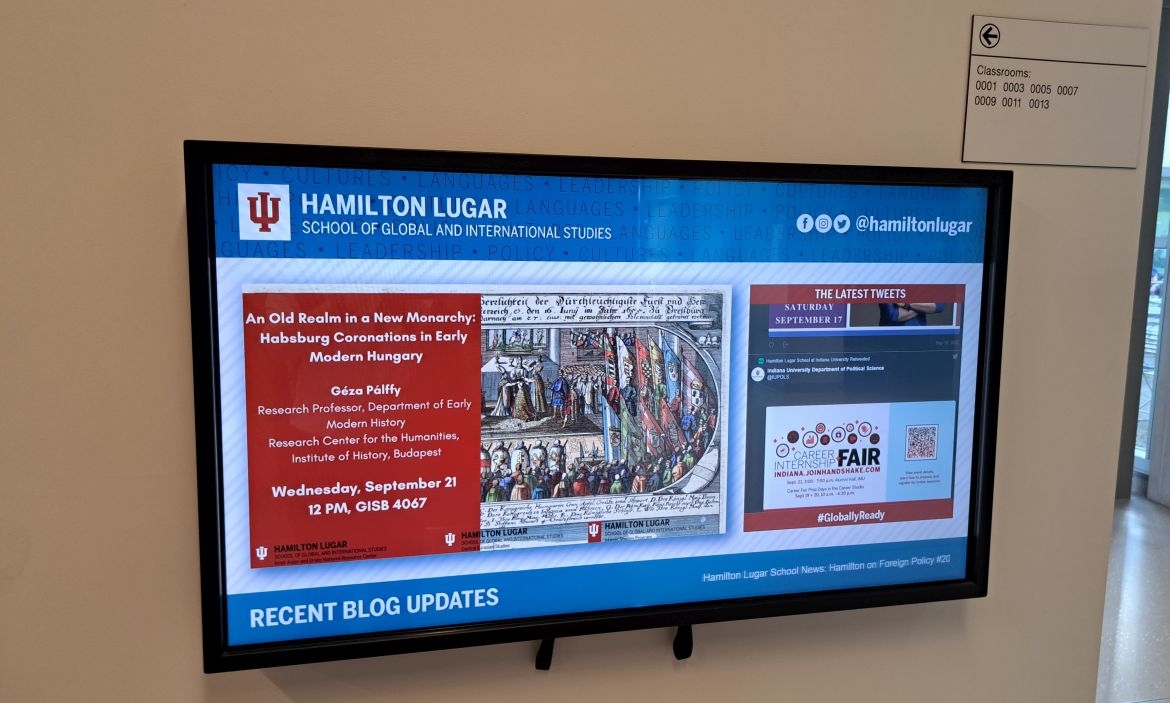The monograph of Géza Pálffy, senior research fellow of the Institute of History at the Research Centre for the Humanities was published by Indiana University Press in 2021. The American presentation of the English-language volume titled Hungary between Two Empires 1526-1711 was held on 20 September 2022 at Indiana University in Bloomington.
There, after an introductory lecture by Géza Pálffy, Professors Charles Ingrao and Kaya Şahin, experts on the Habsburg Monarchy and the Ottoman Empire, presented the publication - both of them calling it a complex, comprehensive work.
 Géza Pálffy with his book, Hungary between Two Empires 1526-1711
Géza Pálffy with his book, Hungary between Two Empires 1526-1711
The book, published in Bloomington, is the opening volume of a new Hungarian history series (Studies in Hungarian History) edited by László Borhi, professor at Indiana University and senior research fellow at the Institute of History at the RCH. The high-quality English translation is by David Robert Evans. The monograph examines the history of Hungary, divided into three parts between 1526 and 1711, primarily within the framework and on the borders of the two great empires of the period, the Ottoman Empire and the Habsburg Monarchy, in the context of international processes and various fundamental challenges, constraints, positive and negative changes, rather than the various romantic and national narratives of the 19th and 20th centuries.
 One of the main entrances of Indiana University
One of the main entrances of Indiana University
In this sweeping historical survey, Géza Pálffy takes readers through a crucial period of upheaval and revolution in Hungary, which had been the site of a flowering of economic, cultural, and intellectual progress—but battles with the Ottomans lead to over a century of war and devastation. Pálffy explores Hungary's role as both a borderland and a theater of war through the turn of the 18th century. In this way, Hungary became a crucially important field on which key debates over religion, government, law, and monarchy played out. The book is published in both hardback and paperback - available in the Americas and in Europe and Asia.
 Bench at Indiana University
Bench at Indiana University
For the international readership, the volume contains around half a hundred illustrations, more than a dozen maps (the work of Béla Nagy, research fellow of the Institute of History at the RCH, whose importance was praised by Professor Ingrao at the launch), a select bibliography of nearly 500 items, a historical chronology, a glossary, and lists of rulers and highest dignitaries. On the publisher's website (under the Praise tab), the work is recommended by world-renowned professors such as Robert J. W. Evans, Howard Louthan, Nicolette Mout, Charles W. Ingrao, who also participated in the Bloomington event, and Graeme Murdock. The book aims to promote a more thorough and objective understanding of Hungarian history between the Battle of Mohács and the Peace of Szatmár (Satu Mare, Romania) among a wider audience worldwide. The more than half a dozen reviews that have been published so far, all of which have praised the volume, are a major contribution to this.
 An Old Realm in a New Monarchy: Habsburg Coronations in Early Modern Hungary at Indiana University
An Old Realm in a New Monarchy: Habsburg Coronations in Early Modern Hungary at Indiana University
The day after the book talk, on 21 September 2022, at Indiana University, Géza Pálffy had the opportunity to present the main results of his research group. What new source material has been uncovered in various archives of Europe concerning early modern Hungarian coronation ceremonies? How were late medieval traditions preserved by the Hungarian political elite and what was their long-term significance? What changes to ceremonies were brought about by the integration of the Kingdom of Hungary to the Habsburg Monarchy in Central Europe after 1526? Finally, what kind of power, ceremonial and symbolic political struggles took place at the coronations of Hungarian monarchs in the 16th and 18th centuries? The keynote lecture An Old Realm in a New Monarchy: Habsburg Coronations in Early Modern Hungary focused on these questions and presented the most important findings of the research team so far.


